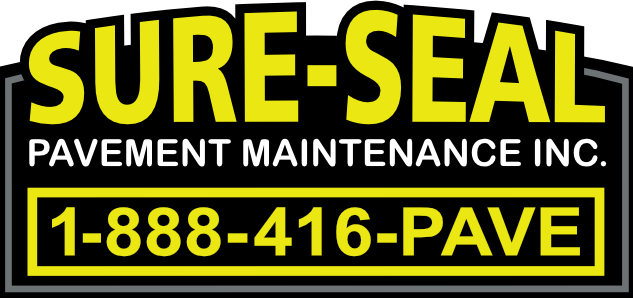![]() Your commercial building’s asphalt parking lot is part of your business. In some cases, it’s the first thing people see when they’re arriving at your business or building. So, it’s crucial to make it safe and welcoming for vendors, employees, customers, and tenants alike. To that end, we have six factors you need to consider in making your parking lot safe and to help you plan your asphalt pavement budgeting for the year.
Your commercial building’s asphalt parking lot is part of your business. In some cases, it’s the first thing people see when they’re arriving at your business or building. So, it’s crucial to make it safe and welcoming for vendors, employees, customers, and tenants alike. To that end, we have six factors you need to consider in making your parking lot safe and to help you plan your asphalt pavement budgeting for the year.
So, what are some of the key factors to think about when seeking to improve the safety of your parking lot?
1. Fixing Damaged Asphalt
Alligator cracks, crumbling edges, depressions, undermining, puddles, sinkholes, and potholes are all types of parking lot damage that can result from natural wear-and-tear and environmental factors.
Any of these issues can not only compromise the structure of your parking lot, but they can also pose a serious safety issue for anyone using it, including pedestrian injuries and flat tires. And, of course, any damage reduces the curb appeal of your commercial property.
It’s important that you schedule a regular inspection of your asphalt parking lot, so you can note problems when they happen…preventing them from leading to major damage or injuries.
Of course, the type of repairs will vary depending on what your damage is, from patching potholes, to parking lot crack sealing, to cold asphalt milling, to unclogging or installing catch basins.
2. Taking Care of Oil Stains
Oil pooling and seeping into your asphalt parking lot can cause the surface to start breaking down. This can eventually mean damage that poses a risk to pedestrians and vehicles alike when visiting your business or building.
Of course, with all sorts of cars and other vehicles coming and going from your parking lot, this will be an issue you need to address at some point. So, you’ll want to remove any oil pools and stains as soon as you can after they appear.
After sopping up any loose oil with rags, pour some baking soda over the area. Scrub the spot well, working the baking soda in. Leave it for 30 minutes, and then hose it down. Repeat as needed.
If you’re having trouble with oil-stain removal, contact a pavement services company for advice.
3. Sealcoating
What if we told you that you can help prevent the aforementioned damage and oil stains from happening in the first place?
Once you have your commercial asphalt parking lot put in, regular maintenance is required to keep it in good condition and extend its life span. Sealcoating is part of that preventative maintenance program.
If you do not maintain your asphalt properly, it can buckle or crumble, become cracked, or develop sinkholes and potholes. This kind of damage can lead to vehicles experiencing a punctured tire, cracked wheel, and damaged shock absorbers. Pedestrians are also at risk—they can trip on damaged areas, sustaining injuries ranging from a mild twisted ankle to a potentially serious head injury.
Sealcoating strengthens your parking lot surface, protecting it from oil and gas stains, pooling water, UV rays, and precipitation (all of which can lead to damage over time); keeping the asphalt colour from fading; and making it easier to remove snow and ice, by trapping heat.
Sealcoating, or pavement sealing, should generally be done every two to three years. Your pavement services company will apply a layer of asphalt-based aggregate over your asphalt. It takes one to two full days to dry. Sealcoating is best done in the fall, when it’s cool, but the first frost hasn’t hit yet.
Sealcoating can’t be done over damaged areas of asphalt. So, before you add sealcoating to this year’s asphalt pavement budgeting list, make sure there aren’t any existing problem areas.
But, when done right, sealcoating can cut down the number of repairs and the amount of oil stain removal you need to do in the future. That’s good news for your asphalt pavement budgeting!
4. Maintaining Striping and Marking
If you don’t already have line marking or striping in your lot, you need to consider the value of adding that in.
Having well-defined parking stalls, handicap-designated spots, stop bars, safety lines, arrows, and pedestrian crossing indicators gives order to your parking lot and keeps all visitors, employees, and tenants safe. They’ll know where to park, what areas are off-limits, where they can walk, and what direction to drive when entering or exiting.
5. Eliminating Blind Spots
You also have to be aware of any fixtures or natural elements around your parking lot that have the potential for causing accidents by creating a blind spot. A garbage can, sign, parking meter, lamp post, shrub, or even a poorly placed parking spot can block the view for pedestrians or drivers at crucial crossings or turning areas.
Do a walk-through and a drive-through inspection of your lot now and then, to be sure no new blind spot hazards have popped up.
6. Taking Extra Precautions
If you want to make your parking lot as safe as possible for customers, employees, and tenants alike, here are some additional precautions to consider: Parking lot signs, Lighting, Video cameras, and Traffic-calming speed humps.
When it comes to your company’s asphalt pavement budgeting, keeping your parking lot safe should be high on your list. It’s extremely important to your employees, your customers or tenants, and your business’ reputation and bottom line. To get assistance with creating and maintaining a hazard-free environment in your parking lot, contact a pavement services expert such as Sure-Seal Pavement Maintenance Inc.. For over 20 years, we’ve been the preferred asphalt contractors for commercial property owners in Toronto and the GTA, providing asphalt parking lot paving, sealcoating, asphalt repair, linemarking, speed hump installation, catch basin repairs, and more. Contact us today to book a consultation!

